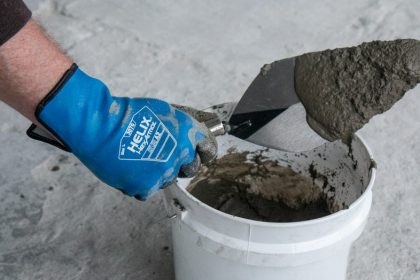Energy-saving devices are among the most wanted for property buyers, but steep prices and a lack of knowledge are holding back investments.
A report from PropTrack and Origin Energy, released last month, found that most of Australia’s builders, buyers and renters considered a home’s energy rating important, and buyers were willing to pay more for a home with solar panels or a battery installed.
Based on a survey of 4500 people and data from 1500 Origin Energy customers, the company found 77 per cent of buyers and 72 per cent of renters considered a home’s energy rating important.
Solar panels were the most popular energy-efficient additions for both home renters and buyers, with almost three in four participants willing to pay more for a home with solar panels installed.
Almost one in three households, or more than 3.6 million homes, are estimated to have solar panels installed, making Australia a world leader in solar energy.
Home batteries also added value for most respondents (61 per cent), being viewed alongside double-glazed windows and rainwater tanks as top value adders for buyers.
Overall, one in 10 Aussies were willing to pay five per cent or more on a home’s price for renewable energy equipment.
PropTrack Senior Analyst Karen Dellow said the results show Australians are looking for energy-efficient solutions to help manage the cost of living.
“With home prices and median rents growing across the country, adopting energy-efficient features could help Australians reduce their bills amidst an ongoing cost of living crisis,” she said.
“The range of energy-efficient features available to households across the country can be used to not only save money but add value to homes.
“Increasing energy efficiency in the home will play a pivotal role in cutting carbon emissions and managing the cost of living for many Australians.”
The results come after two years of climbing energy costs around the country, with the price of electricity rising by 6.9 per cent in the back half of 2023.
Energy efficiency comes at a cost
However, despite the growing interest in energy-saving devices, only eight per cent of respondents said they were considering this move in the next year.
Almost half pointed towards the high entry cost as their main reason for not going all-electric, and one in five respondents said they needed more information about the move.
Installing a solar system will still see homeowners forking out anywhere between $5000 to $15000, with declining feed-in tariff rewards meaning most panels won’t pay for themselves for at least 6 -10 years.
Home batteries have an even steeper entry fee, with most upper-end systems starting at $17000 and going all the way up to $30000.
According to solar comparison website Solar Choice, the payback period for these batteries is still outpaced by the warrantied life of the system, even after factoring in additional benefits from various government rebate schemes.
In a typical household scenario, a battery takes 12 years to pay for itself, and most batteries have a 10-year product warranty.
Origin Energy retail executive general manager Jon Briskin said identifying the hurdles to making homes more efficient is vital to helping more people manage energy costs.
“With cost-of-living pressures having an impact for Australian households, the energy industry has an important role to play in making sure no one is left behind and that all Australians, regardless of their circumstances, can take control of their energy and benefit from a cleaner and smarter energy future,” he said.
“The energy solutions that work for different Australian households will vary significantly based on their specific needs, so it is our role to help customers navigate the complexity and make it simple and easy for them.”





